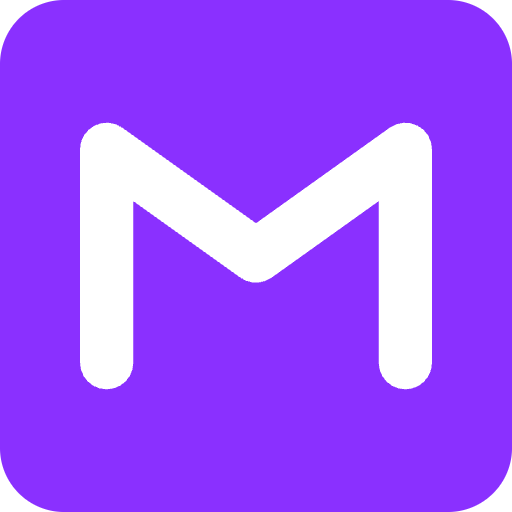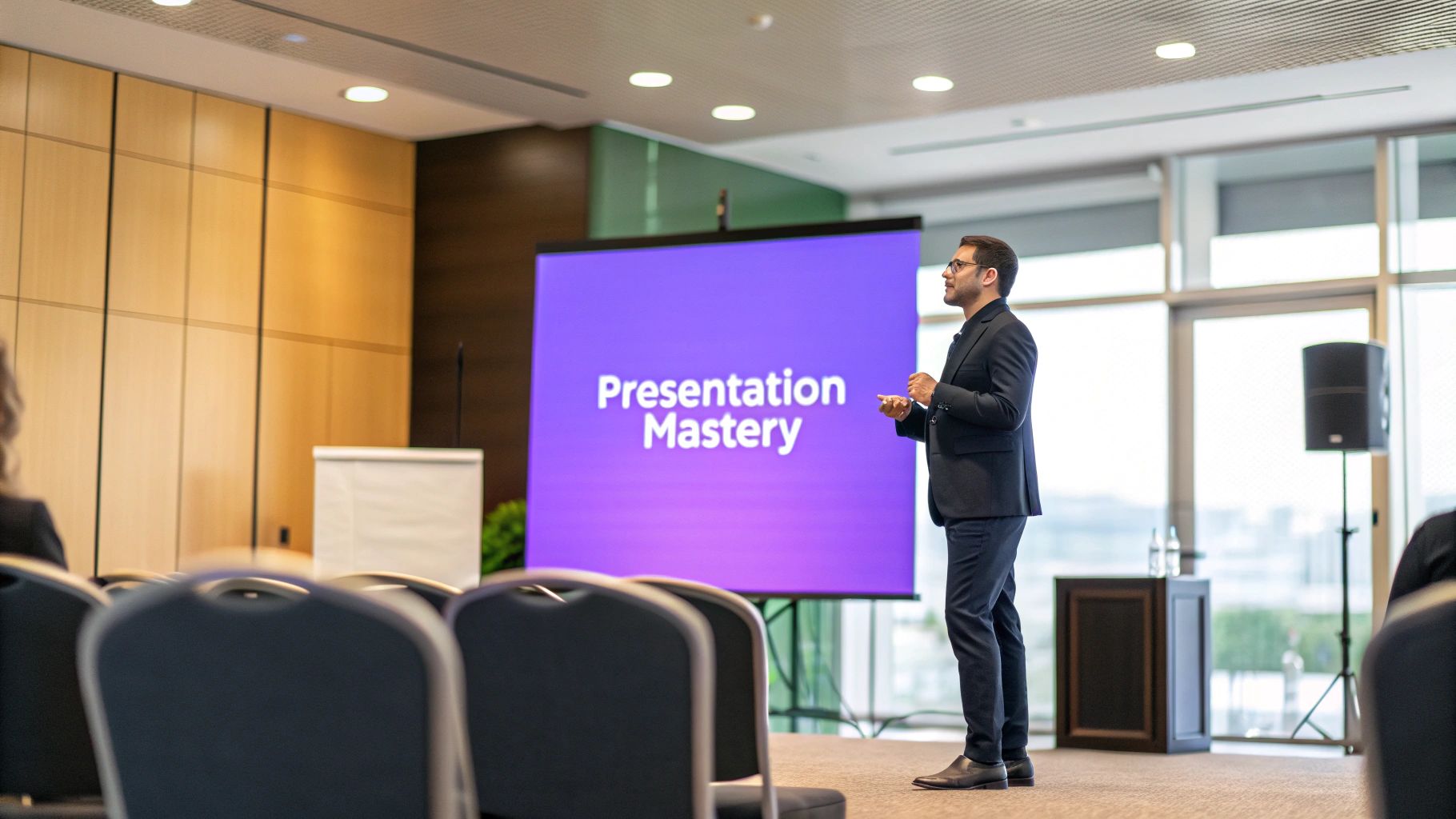How to Network Online: Tips for Building Connections

Before you can really get the hang of networking online, you first need to build a professional presence that people can actually find. Think of your profiles on platforms like LinkedIn as your digital handshake—they’re the foundation for every single connection you'll make. A well-built profile tells your career story and shows off your skills before you even send a single message.
Your Digital Handshake: A Professional Online Presence
Your online profiles are so much more than a dry list of jobs. They're the story that introduces you to the professional world. A strategic presence can turn a passive resume into an active beacon for opportunities, pulling in contacts organically. The goal is to come across as a credible, approachable authority in your field, making people want to connect with you.
Setting this up thoughtfully is non-negotiable. As of early 2025, there are over 5.6 billion internet users around the globe. That’s a massive audience for your professional story, making up about 68.7% of the world's population. This number grew by 144 million in just one year, which shows just how big the pool for online networking has become. You can dig deeper into this growth on Datareportal.com.
Build a Profile That Attracts Connections
The first place to start is your main professional hub, which for most of us is LinkedIn. Kick things off with a high-quality, professional headshot. This isn't about looking stiff or corporate; it's about appearing friendly and trustworthy. Definitely skip the casual selfies or group shots.
Next, give your summary or "About" section a complete overhaul. Don't just list your skills. Instead, weave a narrative about your career path, what you're passionate about, and what really drives you.
A great profile summary answers three quick questions for anyone who lands on your page: Who are you? What value do you bring? And what are you looking for next? Frame your story around these points, and you'll make an immediate, lasting impact.
Finally, use the "Featured" section to showcase projects, articles, or presentations that put your expertise on full display. This gives people concrete proof of what you can do and a solid reason to engage with you.
The image below perfectly illustrates how a professional fine-tunes their online profile, which is a crucial first step in building a powerful digital presence.
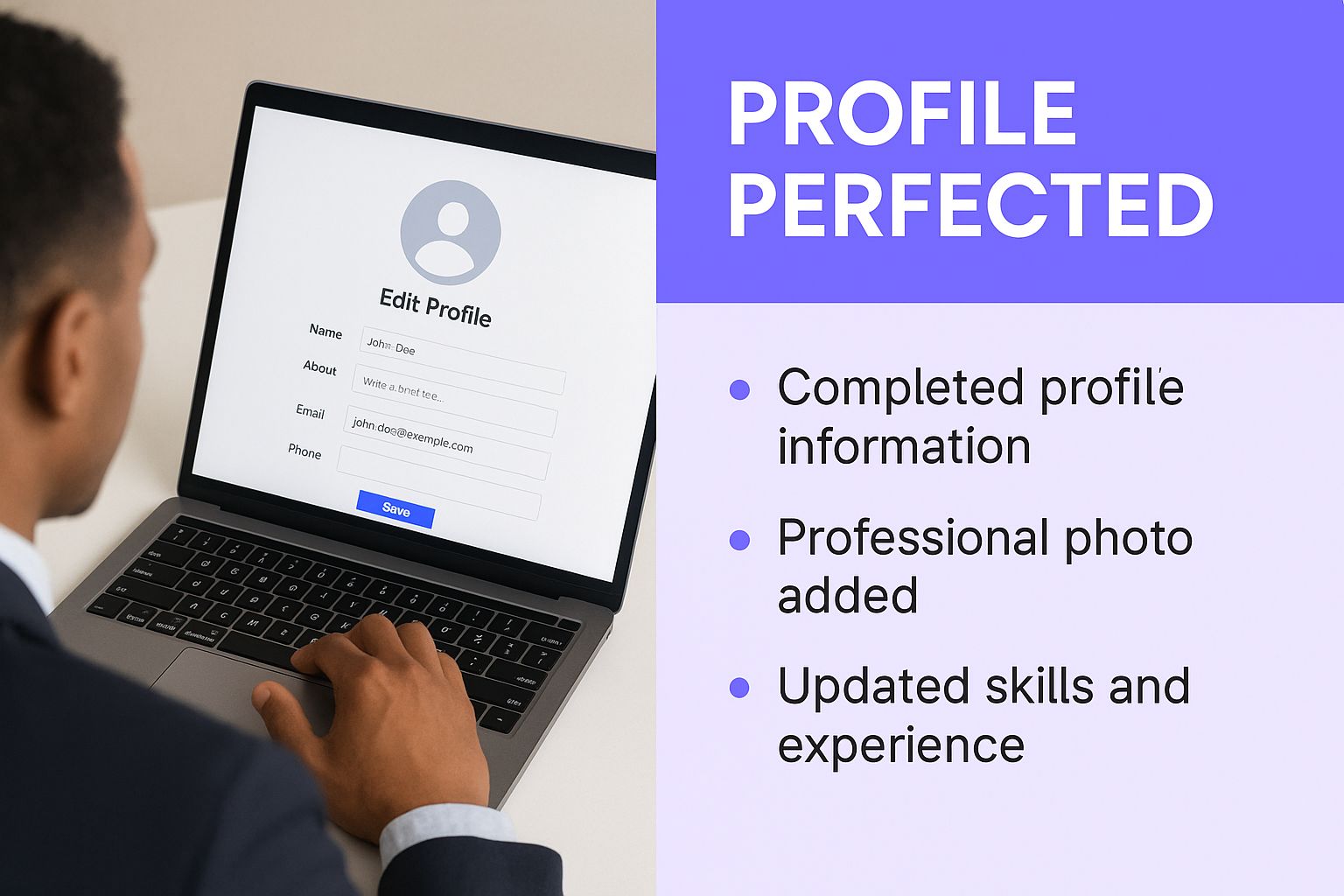
This visual really drives home the point that you should treat your profile as a living, breathing asset—not just some static document you set and forget.
To tie this all together, here is a quick summary of the key actions you should take across different platforms to build a strong professional brand.
Key Actions for a Powerful Online Presence
This table outlines the essential optimizations across key platforms to build a strong professional brand for effective online networking.
| Platform | Key Action | Why It Matters |
|---|---|---|
| Fully complete your profile with a professional headshot, compelling "About" section, and featured work. | This is your primary professional hub. A complete profile establishes credibility and attracts organic connections. | |
| Portfolio Site | Showcase your best work with detailed case studies, visuals, and clear project descriptions. | It provides tangible proof of your skills and accomplishments, giving depth to your professional story. |
| Social Media | Maintain a consistent and professional tone on platforms like X (Twitter) or industry-specific forums. | It demonstrates your engagement and personality, showing you're an active and approachable member of your field. |
By consistently applying these actions, you create a cohesive and powerful online presence that not only looks professional but actively works to open new doors for you. It’s the groundwork that makes all your future networking efforts far more effective.
Finding the Right People on the Right Platforms
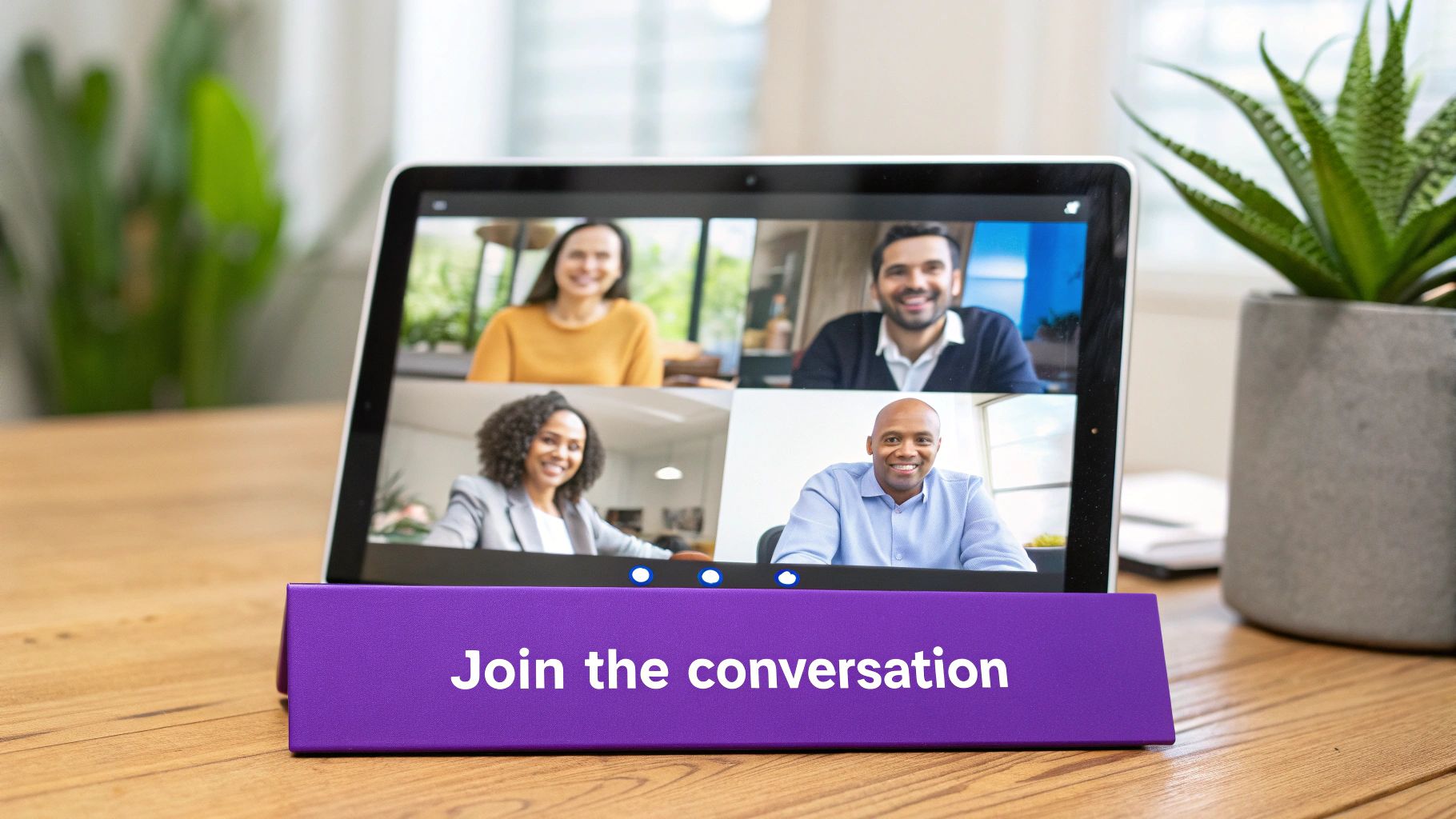
Effective online networking was never about who has the biggest contact list. It's about connecting with the right people—the ones who can genuinely shape your career. The real skill is shifting from a random "add connection" habit to a focused search for valuable peers, mentors, and decision-makers.
And don't just stick to one platform. Yes, LinkedIn is a powerhouse, but the most insightful conversations in your industry are often happening elsewhere. Think about active Slack channels, private Discord servers, or niche forums where people are sharing real-world advice daily. Showing up where your ideal contacts already are is half the battle.
This targeted approach is crucial when you consider the numbers. As of February 2025, there are a staggering 5.24 billion social media users worldwide—that's nearly 64% of the global population. This massive user base makes social platforms the central hub for professional growth. You can dig into more global social media statistics from Statista if you're curious.
Pinpoint Contacts with Precision
Stop mindlessly scrolling and start mastering advanced search filters. On LinkedIn, for instance, a simple job title search is just scratching the surface. You need to combine it with other filters to really zero in on the right people.
- Search for alumni from your university who now work at companies you admire.
- Filter by location if you're targeting a specific city or region.
- Look for people who have commented on or shared posts from industry leaders you follow.
Using these tactics helps you uncover individuals you already have something in common with. This immediately makes your first message feel warmer and more natural, and less like a cold pitch out of the blue.
A killer networking strategy is to identify the "super-connectors" in your field. These are the people who are always active, sharing valuable stuff, and have a large, engaged network. Building a solid relationship with just one super-connector can introduce you to dozens of other relevant contacts.
Finally, try looking beyond job titles. Focus on finding people whose career paths inspire you or who are working on projects that you find genuinely exciting. When your outreach is driven by authentic interest, you build professional relationships that are not only more meaningful but also built to last.
Crafting Outreach That Actually Gets a Response
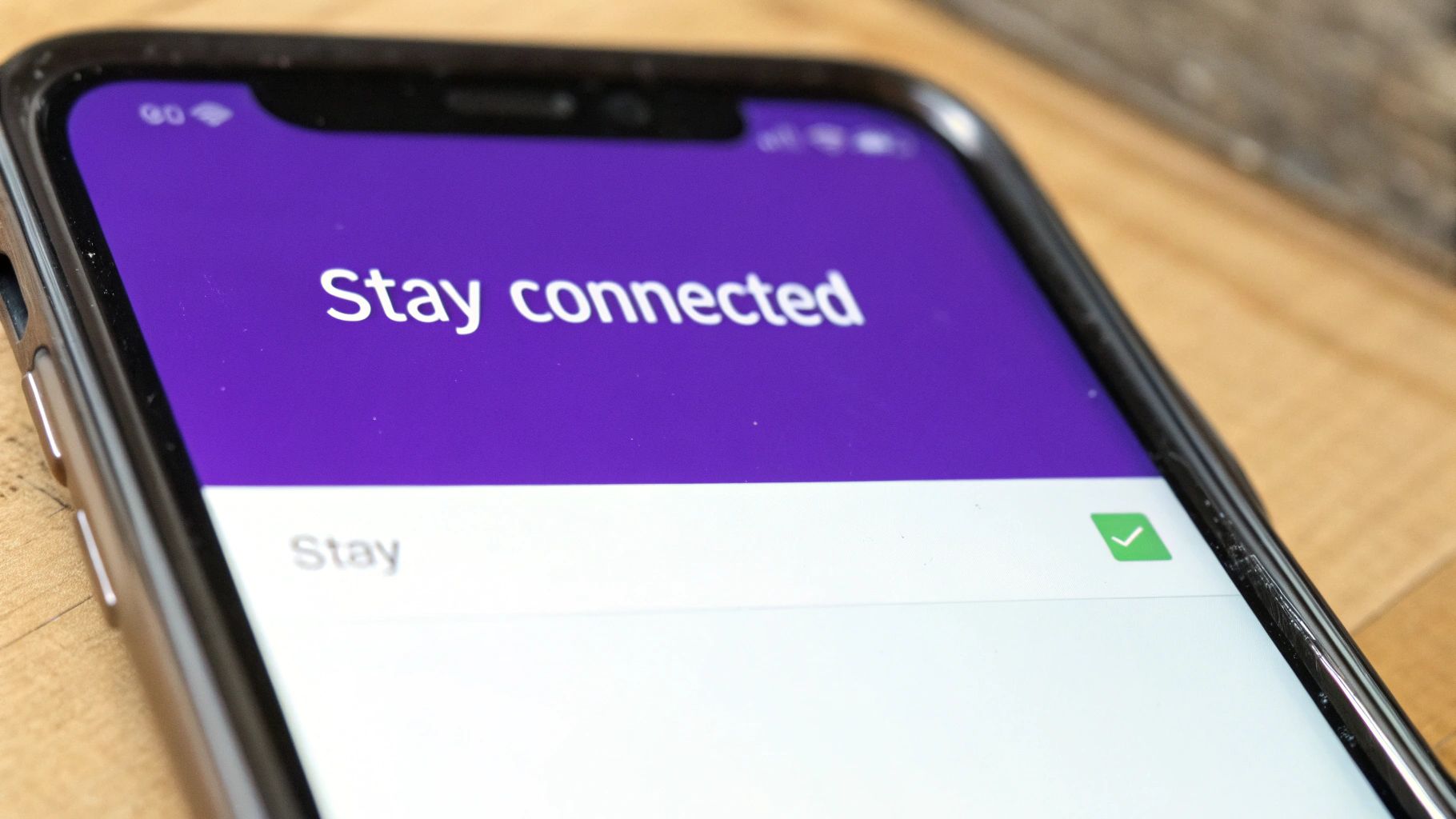
You’ve done the hard work of finding the right people. Now comes the moment of truth: sending a message that someone will actually open and reply to. This is where most online networking efforts fall flat.
Let’s be honest, we’ve all received those generic, one-size-fits-all connection requests. They’re the fastest way to get ignored. I’ve found that successful outreach is less of a numbers game and more of an art form—one built on genuine interest, not just a self-serving ask.
The core principle is surprisingly simple: lead with value and personalization. Before you even think about hitting “send,” you need to do your homework. I’m not talking about hours of research. A quick 60-second scan of their recent activity on LinkedIn or X (formerly Twitter) can give you all the context you need to craft a message that doesn't feel like spam.
The Anatomy of a Perfect Outreach Message
A great first message doesn’t need to be an essay. In fact, it shouldn't be. It just needs to be thoughtful and show you see the person, not just their job title. From my experience, the most effective messages almost always contain a few key ingredients.
- A specific, non-generic compliment: Don't just say "I like your work." Mention a recent article they wrote, a podcast they appeared on, or a project they shared. Specificity shows you've paid attention.
- A point of connection: Did you go to the same university? Do you have a mutual connection? Are you both in the same professional group? Pointing this out instantly warms up a cold message.
- A clear and low-effort "ask": Make your request easy to say yes to. "Picking their brain" sounds like a huge, undefined commitment. Asking for "15 minutes for a virtual coffee" is concrete and much more manageable.
This approach flips the script. Your message goes from being a cold interruption to a welcome conversation starter. It respects their time and proves your interest is authentic, which dramatically increases your odds of getting a positive response.
Remember, the goal of the first message isn't to land a job or a client on the spot. It's simply to start a conversation. If you frame your outreach with this in mind, you'll take the pressure off and come across as far more genuine and approachable.
Real-World Scenarios and Examples
Theory is one thing, but let's see how this works in practice. Context is everything, so your message needs to adapt to the situation. This is precisely why generic templates fail—they ignore the most vital element of human connection.
Scenario 1: Connecting After a Webinar
Instead of the bland, forgettable "Great webinar!" try something with more substance:
"Hi [Name], I was in your webinar on [Topic] today and was really impressed by your point about [Specific Detail]. It clarified my own thinking on [Related Subject]. Would be great to connect and follow your work."
This shows you were actually listening and found real value in what they said.
Scenario 2: Asking for an Informational Chat
Ditch the vague "Can I pick your brain?" and get specific. This approach has worked wonders for me:
"Hello [Name], as a fellow [University Name] alum, I’ve been following your career journey at [Company Name] with great interest. I'm exploring a shift into [Their Industry] and would be grateful for a brief 15-minute chat to hear about your experience. No worries if you're too busy!"
See the difference? It's specific, respectful, and low-pressure. That’s the key to making online networking feel less like work and more like building real relationships.
You've made the connection. Now what?
Accepting a request on LinkedIn is just the first handshake. The real art of online networking starts the moment after. Your goal is to shift from being just another name on their list to becoming a memorable, trusted contact. This isn't about spamming their inbox, but about being thoughtfully and consistently valuable.
The whole game is staying top-of-mind without being a pest. It’s about finding authentic reasons to pop up in their feed or messages that don't always involve an "ask." Think of it as a strategy of giving before you ever consider receiving—that’s how you build a rock-solid foundation of goodwill.
The most powerful online networks are built on generosity. Instead of thinking, "What can this person do for me?" flip the script to, "What can I offer this person?" This simple change in mindset is what turns transactional contacts into genuine professional relationships.
This approach creates what some call a network effect, where the value of your connections snowballs as you pour into them. A small, helpful gesture today can pay off massively down the road, strengthening your reputation and making people genuinely want to help you when you need it.
Practical Ways to Nurture Your Network
Building a real professional relationship happens in the small, consistent moments. It's about showing you're paying attention and are genuinely interested in what they're doing. It’s time to move beyond the simple "like" and start engaging in a way that actually means something.
Here are a few easy, non-intrusive ways to follow up:
- Share a Relevant Article: Come across an article or a report that ties directly into their industry or something they recently posted? Shoot it over with a quick note. Something like, "Saw this and thought of our chat about [Topic]. Figured you might find it interesting."
- Leave a Thoughtful Comment: Ditch the "Great post!" comments. Instead, add to the conversation. Ask a smart follow-up question or share a related insight. It proves you've actually read what they wrote and are engaged with their ideas.
- Offer Help with No Strings Attached: If you see them post about needing a recommendation for a new tool or looking for an expert in a specific niche, and you can genuinely help, jump in. A quick introduction or a useful suggestion can be incredibly powerful.
From Digital Chats to Real Conversations
Once you've built a bit of a rapport, the natural next move is to take the conversation to a more personal setting. A DM thread is great for quick back-and-forths, but nothing solidifies a connection quite like a video call.
Proposing a brief virtual coffee is the perfect low-pressure way to make this happen. Keep it super casual. Try something like: "I've really enjoyed our exchanges about [Topic]. If you’re open to it, I'd love to jump on a 15-minute virtual coffee next week to learn a bit more about your work."
That simple step is how you transform an online contact into a true professional ally.
Using Your Network for Real Career Growth
A strong online network is more than just a list of names—it's a living, breathing asset that can genuinely shape your career path. The real magic happens when you shift from passively collecting connections to proactively using them to uncover unlisted jobs, get frank advice from mentors, or even spark new collaborations. It's about turning those digital handshakes into real-world results.
The secret is learning when and how to make an "ask." This isn't about being transactional or pushy. It's about tapping into the goodwill you’ve already built. For instance, instead of blasting out your resume, you could find a contact at a company you admire and ask for a 15-minute chat about their culture—not for a job referral. This small, respectful approach almost always works better.
Turning Connections Into Opportunities
Think of your network as your personal source of insider information. So many of the best opportunities are never posted on job boards. They get filled through internal referrals and quiet word-of-mouth. By nurturing your connections, you put yourself in the perfect position to hear about these roles before anyone else.
A great way to do this is to signal your intentions subtly. You might post about a new skill you're picking up or share a project you just wrapped up in a specific field. This keeps your network in the loop on your career direction without you having to ask for a single thing.
Your online network is your professional intelligence system. It feeds you real-time insights on industry shifts, company changes, and emerging roles long before they hit the mainstream.
This flow of information is faster than ever. At the start of 2025, there were 5.78 billion mobile phone users across the globe, and a whopping 87% of those were smartphones. This incredible connectivity means networking can happen instantly, from anywhere, making valuable interactions more frequent. You can dig into more data about our digital world in this 2025 global overview.
Ultimately, when you do need to ask for a specific introduction or a recommendation, your request will land with someone who already gets your value and knows where you're headed. That makes them far more likely to go to bat for you.
Got Networking Questions? Let's Tackle Them.
Even with a solid game plan, you're going to hit some awkward or tricky spots. That’s just part of networking. Knowing how to handle the common hurdles will help you navigate them with confidence instead of getting stuck.
One of the biggest hang-ups I see is the fear of sounding fake. The best way around this is to let your genuine curiosity lead the way. Don't just add people because they have an impressive job title. Instead, find and follow people whose work you truly admire. When your outreach comes from a place of real interest or a shared passion, it never feels forced.
Another common question is how to find the time. Let's be real, nobody has hours to spend on this. The good news is, you don't need it.
Set aside just 15-20 minutes a day for networking. Use that time to do a few focused things, like sending two personalized connection requests, leaving one thoughtful comment, or checking in on a recent chat. Small, consistent efforts beat sporadic, marathon sessions every time.
This approach keeps networking from feeling like a chore and makes it a sustainable habit.
So, What Happens When You Get Ghosted?
It’s happened to all of us. You spend time crafting a thoughtful, personalized message... and hear nothing but crickets. My first piece of advice? Don't take it personally. People in senior roles get flooded with messages, and it's easy for a good one to get buried.
Here’s a simple, no-pressure way to follow up:
- Wait at least one to two weeks after your first message.
- Find a recent article or post they shared that you find interesting.
- Reply directly to your original message with something short and helpful.
For example, you could say: "Hi [Name], just following up on my last message. I saw your recent post on [Topic] and thought this article might be up your alley. [Link]. Hope your week is off to a great start!"
This little nudge does two things: it brings your message back to the top of their inbox and reframes you as a helpful resource, not just someone asking for something. If you still don’t get a reply, it’s time to move on. Your energy is better spent connecting with people who are ready to engage.
Ready to build a professional presence that gets you noticed? MakerBox uses AI to create optimized bios, profile photos, and content that boosts engagement and opens doors. Transform your online profiles in just 30 seconds and start making connections that count. See how it works at https://www.makerbox.io.
